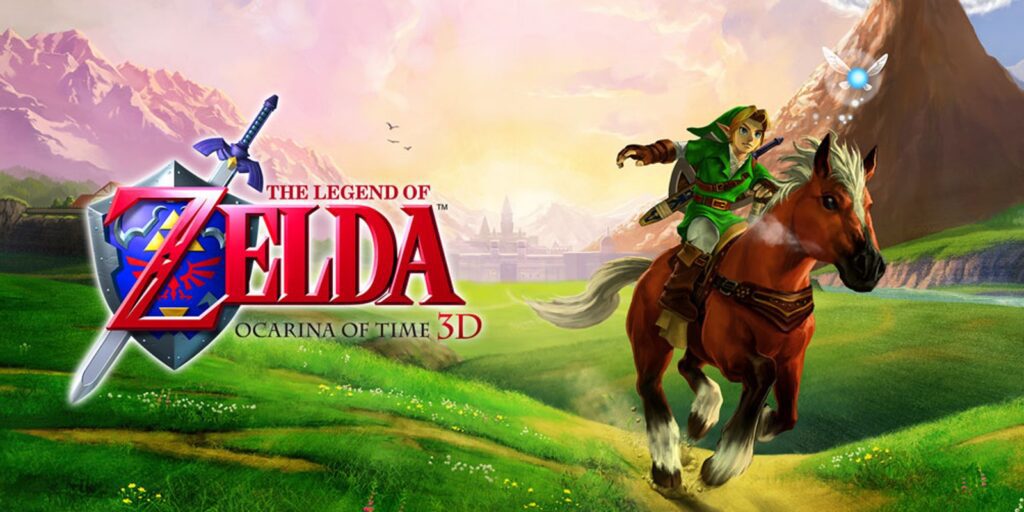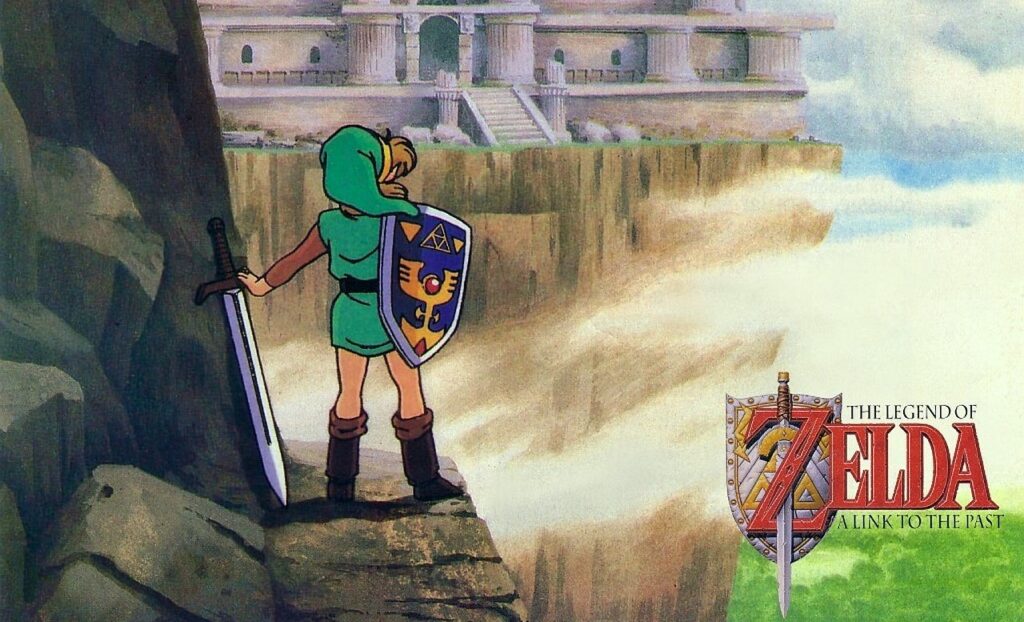Ocarina of Time

Time travel is not a new mechanic to gaming, television, or entertainment generally. However, one particularly inventive franchise has brought this story mechanic to the table in unique and interactive ways. We are of course talking about The Legend of Zelda. For those new to gaming—or not particularly versed—The Legend of Zelda franchise has been a Nintendo juggernaut since the late 1980s. Its popularity has grown and evolved over the years, seeing multiple releases, industry-shaping game designs, and massive international cultural appeal.
With so many releases, it’s no surprise that there are multiple timelines for each iteration of Link’s adventures. Link, the games’ main protagonist, has saved Princess Zelda and his home Hyrule from the evil Ganondorf enough times that Nintendo has had to mix things up. These medieval-style adventures have at times branched away from the story’s main arena (Hyrule), moved away from princess saving entirely, or taken Link to completely new worlds.
Whole compendiums and other books have been written (and could be written) about the Zelda games and their branching timelines. Each new game is built on a history that’s just as richly crafted as any great fantasy series. For the sake of brevity, we’ll be focusing on time mechanics in these interactive Hylian stories. Not only because we ourselves are a time-oriented company, but because three of the most significant and influential releases in the Zelda franchise have put time front-and-center.
Ticking Clocks and Melodies

Link’s magic Ocarina was first introduced on the Super Nintendo in A Link to the Past (1991). Considered one of the greatest video games of all time by critics and fans alike, intrepid gamers were once again tasked with saving the Princess Zelda from the clutches of Ganondorf. A tricky item to attain in Link to the Past, the Ocarina is used to fast-travel across Hyrule—but the game’s time travel mechanic is controlled via a magical mirror (plus a few portals in-world). Ditching the magic mirror, the series moved the Ocarina up as Link’s time travel device in Ocarina of Time (1998). The name really gets the point across. In Ocarina of Time Link’s Ocarina serves to send the player to-and-from the past and present in order to save Hyrule. In this case, both the Princess and Link join triforce powers to take down Ganon. Using the power of Zelda’s instrument, Link can go from being a child to an adult instantaneously. His relative size plays a key role in-game.
With the success of Ocarina under Nintendo’s belt, a second Legend of Zelda game was put into production for the N64 console. It was bound to be more difficult, dark, and feature time as its key mechanic—Ocarina in tow. Two years after Ocarina of Time took the world by storm, the evermore time-centric Majora’s Mask (2000) was released.
A common literary device, having a “ticking clock” in a story can be metaphorical or literal way to build tension. In the case of The Legend of Zelda: Majora’s Mask the main source of tension is a 72 count-down timer. To top that off, there’s an entire town to be saved that’s built around a clock tower (pretty literal) which tracks both time and day/night cycles. If the town isn’t saved within three days a very creepy, angry-faced moon will crash into the clock tower in “Clock Town” (very creative naming). If the moon isn’t stopped, it will destroy the people of Clock Town and Termina—the land Link is to save in the game. Using the Ocarina of Time, Link can reverse time (Groundhog Day style) and whisk his way back to the beginning of each 72 hour cycle. Like clockwork, the townsfolk in Clock Town go about their routines across each day. The player can choose to engage any one of these ticking-clock non-playable characters (NPC’s) and help them with their individual plights—or simply save them by taking down dungeon bosses outside of the town. Link’s Ocarina of Time has melodies that unlock key areas in the world, help him fast-travel, and ultimately save Termina’s Clock Town by repeating the same three days over-and-over. The only way to truly win, though, is to wait for time to wind down—in order to confront the final foe.
Time Traveling Hero
The creator of The Legend of Zelda, Shigeru Miyamoto, named the main character “Link” to signify his Link between the future and the past. Time travel was always meant to be a mechanic of the games but wasn’t realized until its later releases. Since the 1986 introduction of Link in The Legend of Zelda he’s gone by many different names: “Hero of the Skies”; “Hero of the Minish”; The Four Who are One in “Four Swords”; “Hero Chosen by the Gods”; “Hero of Light”; “Hero of Legend” (Link to the Past); “The Hero of The Winds”; “Hero of the Wild”; and of course the “Hero of Time” in Ocarina of Time and Majora’s Mask. Here at TimesTicking we’ll stick to “Hero of Time”. We’ll continue to be happy residents of Clock Town (at least in this timeline).
Times Ticking has been in operation for more than 30 years, since 1982. We have performed watch repair for customers both locally and internationally. If it Ticks! We KNOW it! Our team of watch repair technicians have a combined experience in watchmaking of over 120 years.

